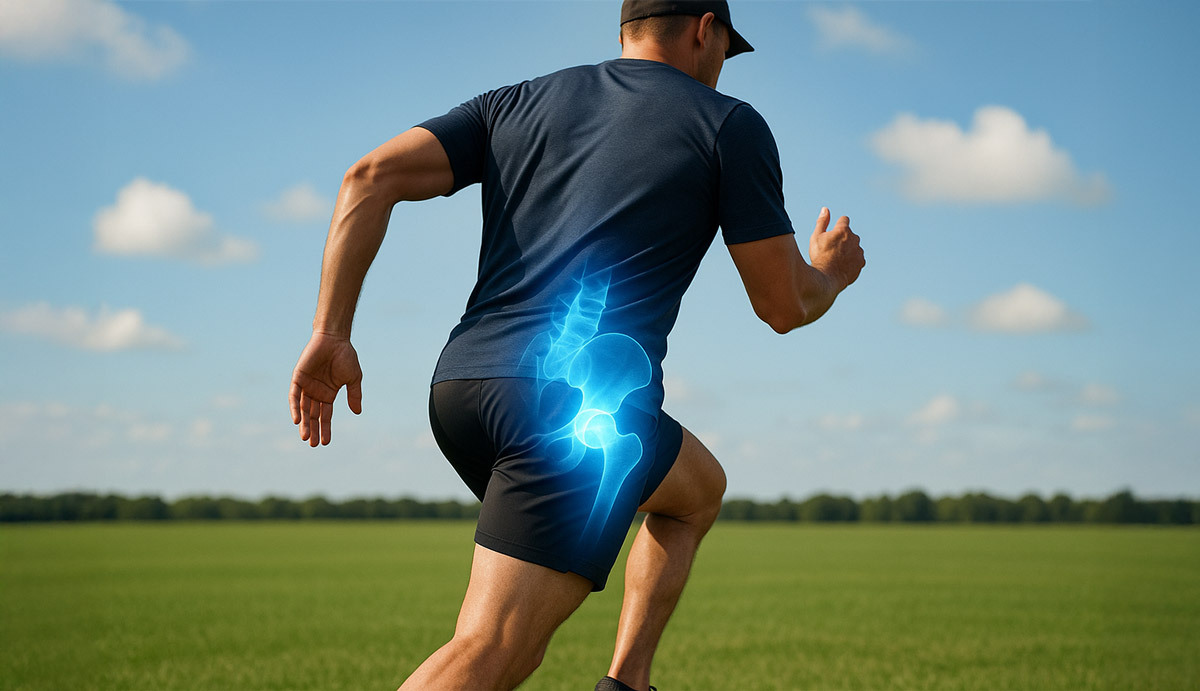
You’re not alone. Hip pain remains one of the most stubborn complaints in clinical practice - not due to lack of training, but because of the anatomical and biomechanical complexity of the region. And for those of us seeing an uptick in musculoskeletal flare-ups as patients become more active in summer, these cases aren’t always straightforward.
Even with well-executed physical therapy and textbook injection technique, some patients plateau. Others return saying they felt better for a day, then the pain came right back. It’s frustrating - especially when you've followed every step by the book.
So what gives?
The hip is structurally deep, biomechanically messy, and loaded with tissues that refer pain in overlapping patterns. That complexity is magnified by seasonal activity shifts: patients hiking, running, golfing, or simply walking more in the heat. These cases start showing up with stubborn glute pain, lateral hip tightness, and poorly defined posterior irritation - often resistant to conventional approaches.
Trochanteric bursitis might be the diagnosis on paper, but in practice, it’s often a red herring. Research continues to show that lateral hip pain is usually multifactorial.
A 2022 review in Skeletal Radiology showed that gluteus medius and minimus tendinopathy were present in up to 62% of patients originally diagnosed with bursitis. And in most of those cases, the bursa was not the primary pain driver - it was a secondary response to tendinous overload or poor biomechanics.
Patients increase their physical activity in the warmer months, and any underlying gluteal weakness or strain quickly manifests. If outcomes aren’t tracking post-injection, it’s worth reassessing whether the bursa was ever the issue in the first place.
Static imaging or a single view can mask the true complexity of hip pathology. The hip is a deep structure, influenced by fascial tension, rotational stress, and proximal muscle imbalance. Treating based on a single symptom or scan may oversimplify the problem.
Dynamic evaluation - including movement testing, gait analysis, or positional discomfort - often reveals that pain presentation is postural or load-dependent. In summer, those factors become even more pronounced with added walking, running, and sport.
Fascial structures, like the fascia lata and iliotibial band, contribute significantly to lateral and posterior hip pain - especially in patients with altered gait, pelvic obliquity, or longstanding compensations.
A 2022 paper in Clinical Anatomy found notable overlap in pain between gluteal tendinopathy and lateral fascial tightness, with higher incidence in physically active adults. If your treatments are focusing on tendons but ignoring fascial dynamics, outcomes may be inconsistent.
Fascial restrictions don’t always present on static scans. You’ll often find them only through palpation, functional testing, or in certain imaging planes during movement.
When patients complain of vague buttock pain, the obturator internus complex often flies under the radar. This includes the obturator internus and gemelli - stabilizers and rotators that don’t typically show up clearly on conventional MRI but can wreak havoc in athletes or those with rotational strain.
In the summer, cyclists, hikers, and yoga enthusiasts may report posterior pain with rotation or prolonged sitting. If lumbar imaging is inconclusive and SI joint dysfunction has been ruled out, don’t forget to scan (or consider) the deep external rotators.
If the injection went in smoothly, the scan looked clean, and the physical therapy box has been ticked - but the patient is still in pain - what then?
It’s possible your technique was right, but the target was wrong. That’s not a fault - it’s a clinical reality. The hip’s overlapping innervation, load-bearing role, and muscular redundancy make it easy to miss the mark, even when everything seems textbook.
Summer often pushes these cases to the surface: longer walks, sports tournaments, weekend hikes. When conventional methods start to produce diminishing returns, it’s time to reassess, not retreat.
If any of these points resonate, you're not behind - you're evolving. We all come to a crossroads eventually: when familiar approaches start yielding inconsistent results and we’re left looking for a more refined lens.
At BioReset University, we’ve designed our advanced courses for exactly this. We focus not on repeating what you already know, but on expanding it - particularly in nuanced areas like hip pathology. From anatomical refreshers to real-world injection walkthroughs, our hip module gives clinicians a fresh look at pattern recognition and procedural finesse.
Whether or not you're currently using ultrasound, these insights are designed to bridge the gap between diagnosis and outcomes - especially in patients where textbook protocols aren't enough.
Sometimes, improving outcomes doesn’t start with doing more - it starts with noticing what you might be missing.